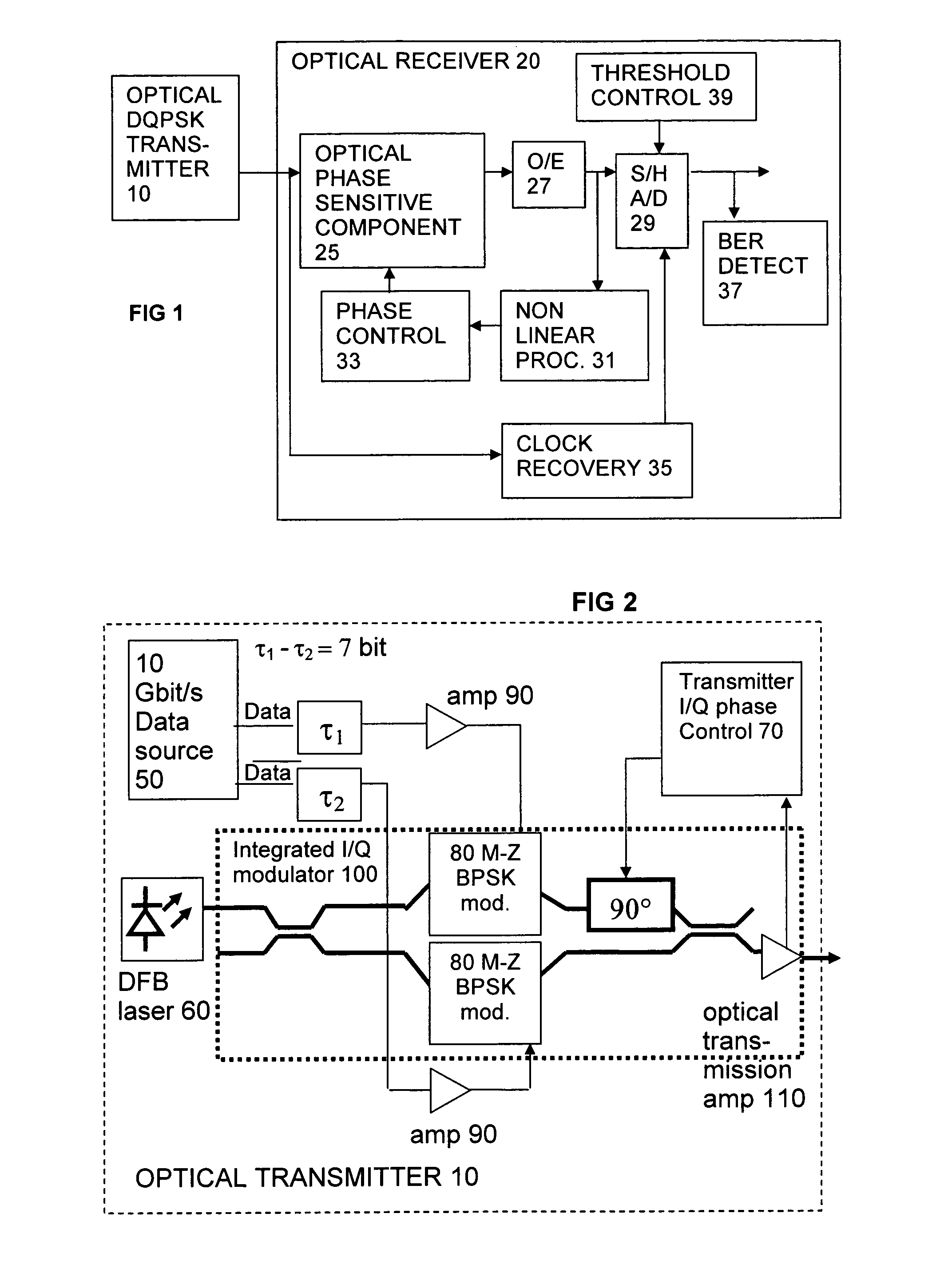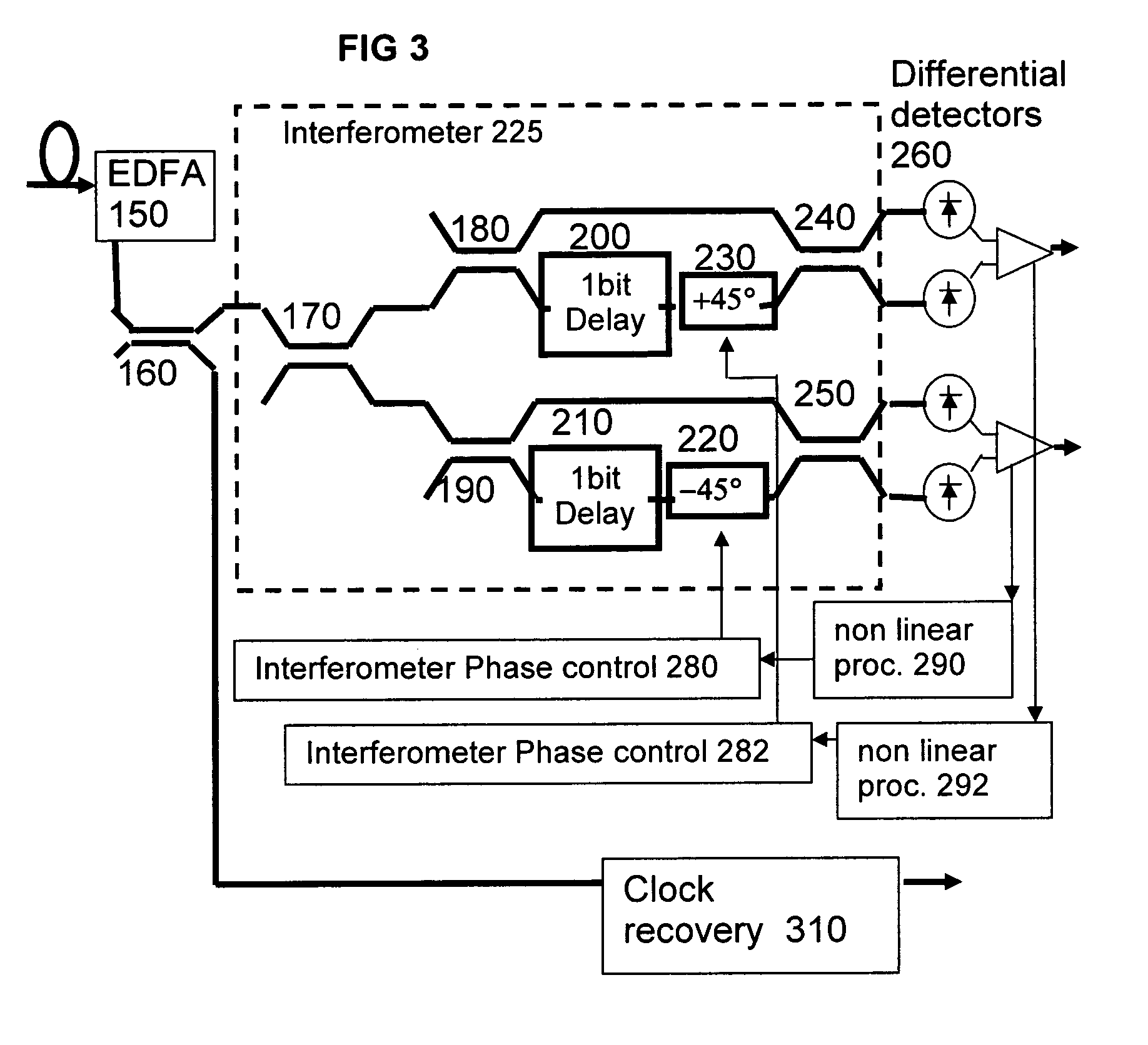DQPSK receiver phase control
a receiver and phase control technology, applied in electromagnetic transmission, multiplex communication, electrical equipment, etc., can solve the problems of low control signal sensitivity, unbalanced mzi of each mzi, and inability of the receiver to efficiently demodulate the transmitted data
- Summary
- Abstract
- Description
- Claims
- Application Information
AI Technical Summary
Benefits of technology
Problems solved by technology
Method used
Image
Examples
Embodiment Construction
[0031]The embodiments relate to an optical DQPSK receiver which is set to the optimum operating point in terms of the differential phase delay between the two paths through the interferometer on the basis of maximizing a cost function derived from the received signal. The cost function is generated by amplifying the output from a balanced receiver on the output of an interferometer. The gain is sufficient that the amplifier is operating in its non-linear region, i.e. the signal is in compression. The amplifier is followed by a square law detector which in combination with the non-linear characteristic of the amplifier produces a tone at the baud rate of the incoming signal. When the power in the tone is at a maximum, the operating point of the interferometer is correct for the reception of DQPSK (i.e. + or −pi / 4).
[0032]DQPSK modulation is proposed in combination with the modulation of two polarization states is one way to increase the capacity of Next Generation Modem systems from 1...
PUM
 Login to View More
Login to View More Abstract
Description
Claims
Application Information
 Login to View More
Login to View More - R&D
- Intellectual Property
- Life Sciences
- Materials
- Tech Scout
- Unparalleled Data Quality
- Higher Quality Content
- 60% Fewer Hallucinations
Browse by: Latest US Patents, China's latest patents, Technical Efficacy Thesaurus, Application Domain, Technology Topic, Popular Technical Reports.
© 2025 PatSnap. All rights reserved.Legal|Privacy policy|Modern Slavery Act Transparency Statement|Sitemap|About US| Contact US: help@patsnap.com



